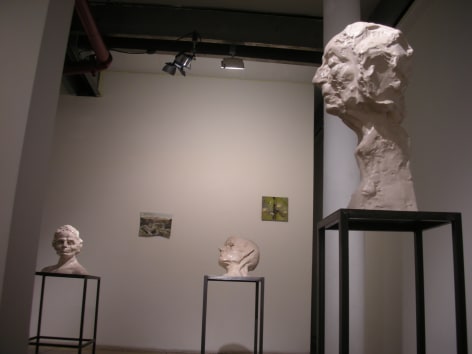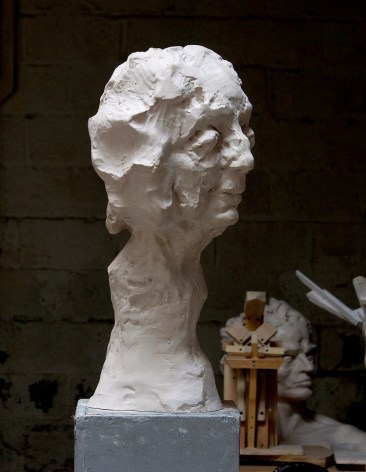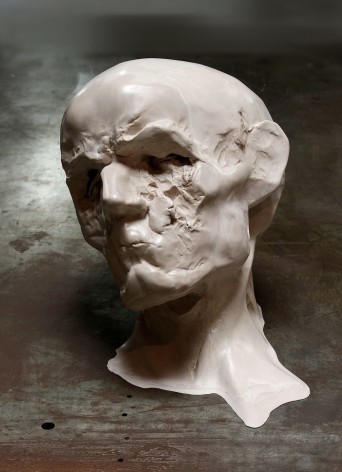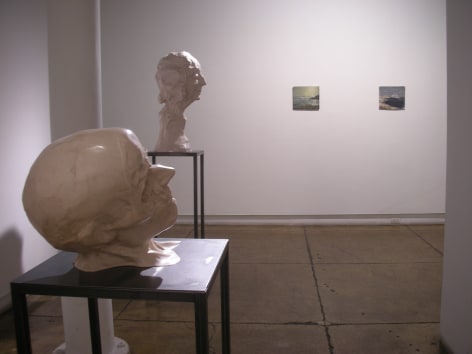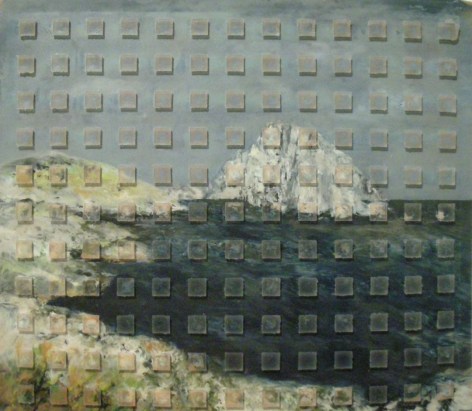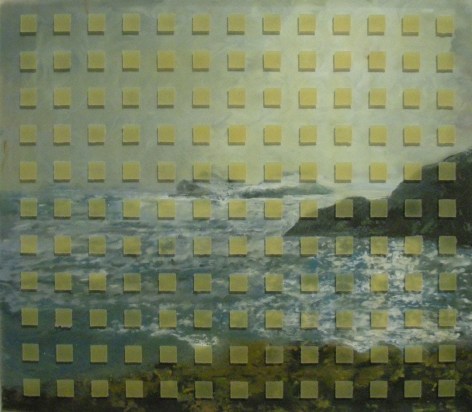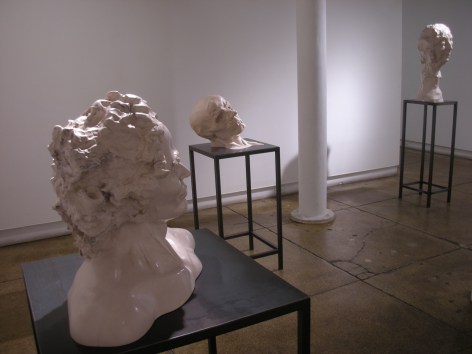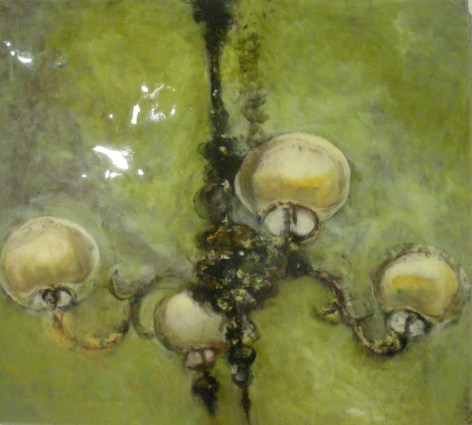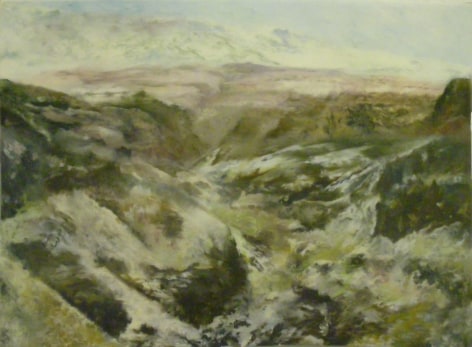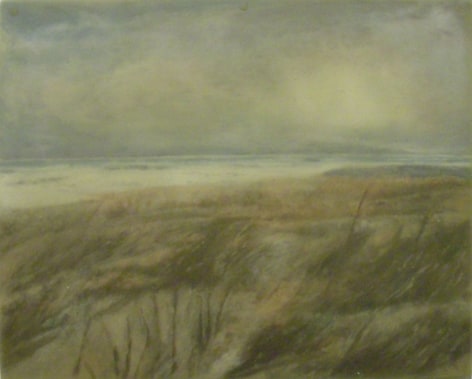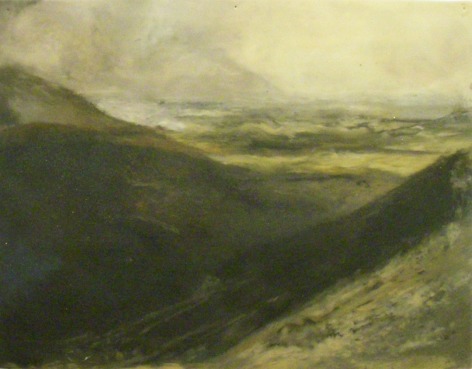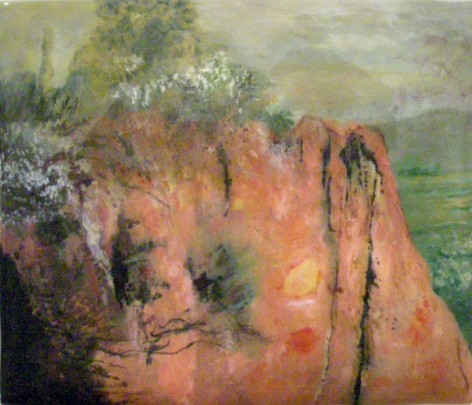Stux Gallery is pleased to present the New York based Bulgarian artist, Kosyo Minchev, known for his innovative and puzzling combinations of classical motifs, unconventional media and confronting compositions. Kosyo’s works interpret timeless issues of mortality and beauty in uniquely contemporary ways. In his fourth show at Stux, “Erasing the Tracts”, Kosyo continues his ruminations with a series of sculptures and paintings that take his striking thesis to new heights.
Classical concepts of beauty, strength and artistic integrity are openly addressed in Kosyo’s art. One work, simply titled “Bust”, follows the basic tenants of classical sculpture down to the dignified, Caesar-esque shoulder position and manicured curls. However, the face is undefined and covered in unsightly and painful cracks and scratches. The “imperfections” are both a statement of the sculptor’s technique as well as an attempt for abstract expression. In such a boldly stylized piece, the sculptor’s presence is slyly obscured, leaving the viewers stranded to isolate and identify the subject matter on their own.
In his sculpture “Suffering Man”, Kosyo attempts an even more radical way to distill and materialize the intangible state of human suffering, the agony of life hovering between vitality and demise. The brows are furrowed and the lips are pursed, while the skin is devastated and entirely distorted by violent, jagged knife marks. It appears as if the sculpture has escaped the confines of the human form and stepped into a purely abstract, emotional realm. At the same time, due to the imbalance caused by the tilted head and disproportionately minimal shoulder support, the piece firmly clings onto the surface it is displayed on, suggesting a fundamental relationship between the material world and intangible, subjective emotions and ideas. The rules of anatomy and the presence of the artist fade simultaneously and the piece stands on its own as a manifestation of pure suffering, in a tacit allusion to more classical sculptures.
These concepts are reiterated and amplified in Kosyo’s landscape paintings. Rather than applying paint over a surface, Kosyo employs a delightful process that allows him to infuse paintings inside the painting surface—silicone—and create artworks that can be stretched and molded along with its malleable medium. Kosyo’s paintings are deeply indebted to the Romantic tradition of majestic, sublime portraits of nature, but they are jarringly soft and rubbery to the touch. As a result, viewers are forced to re-evaluate their relationships with these familiar visions and with paintings in general. While the silicone denies the viewer access to the painting inside, it initiates refreshing examinations of our default methods of viewing art, the nature of painting and the continuity of art history.
Kosyo excels at guiding viewers towards the provocative yet elusive middle grounds between the classical and the contemporary, the visible and the imaginary, the fleshly and the spiritual. He confounds standards and categories we commonly rely on to examine the world, but also advocates for their necessity. While his works demand awareness of history and its effects on our visual judgments, they also challenge us not to bluntly abandon our preconceptions and search for an informed consensus.

